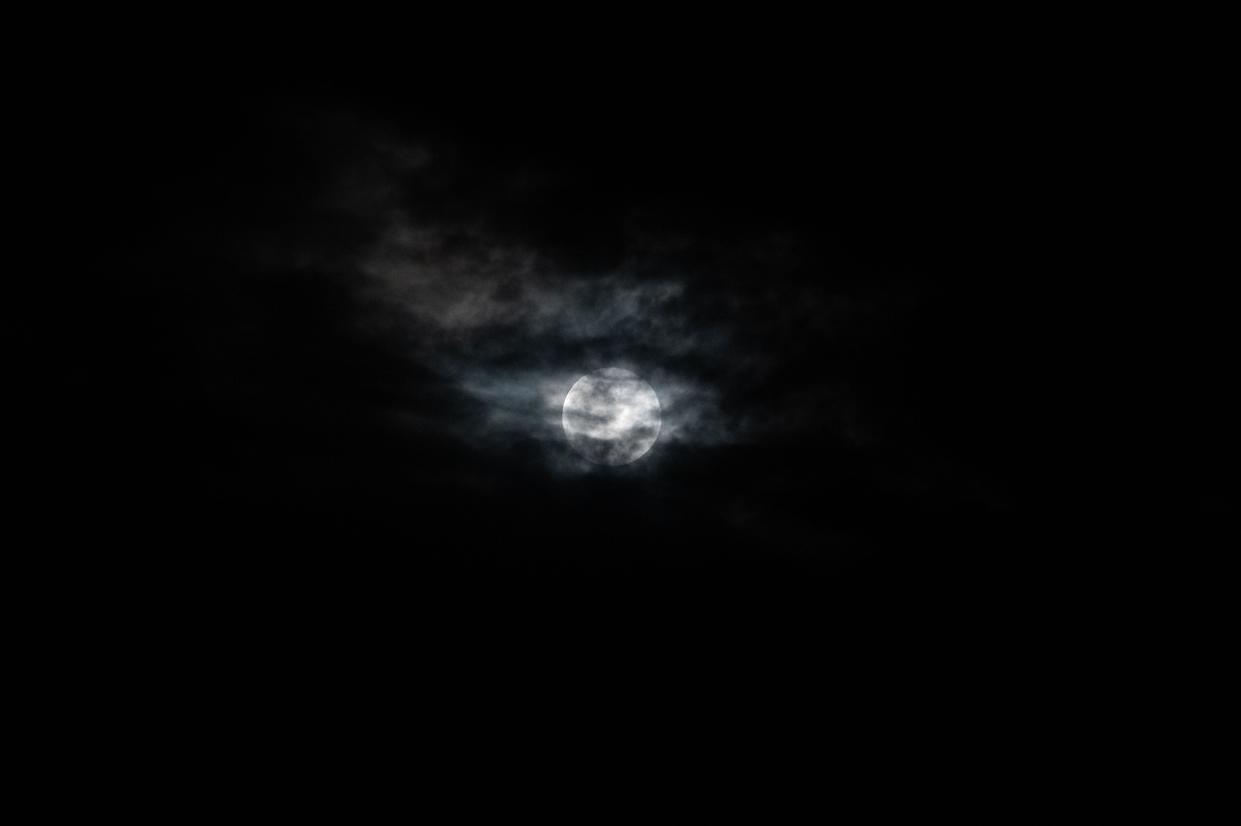How to see the 'blue supermoon' in the UK tonight

Photographers captured a rare event over Britain’s skies this week - a ‘blue supermoon’ - and there’s still a chance to see it again tonight.
The so-called blue supermoon, which appears bigger in the skies due to the moon’s orbit, appeared a rusty red over Britain due to smoke in the atmosphere from wildfires in North America (despite the name, blue moons are not actually blue).
The smoke particles mean that light is scattered in such a way as it passes through the atmosphere that the reddish hue is more visible than usual.
The full moon actually peaked yesterday evening in the UK, but sky-watchers may be able to get a better glimpse tonight due to clearer skies, with the moon still appearing full from Sunday morning through early Wednesday morning, according to NASA.
This month’s full moon is also known as the Red, Corn, Barley or Dog Moon - and as the ‘Sturgeon’ moon, a Native American term due to the fish being able to be caught in the Great Lakes in summer.
What is a supermoon?
Supermoons are when the moon is closest in its orbit to the Earth, making it appear bigger and brighter than usual.
Supermoons (or perigean full moons, to be technical) can be up to 14% bigger and 30% brighter than normal full moons – and happen when a full moon coincides with the moment the moon is closest to Earth on its (slightly wonky) orbit.

The term ‘supermoon’ was coined in 1979, with NASA saying: "When a full moon appears at perigee [its closest point to Earth] it is slightly brighter and larger than a regular full moon - and that's where we get a “supermoon”.’
The moon has an elliptical orbit around the Earth, and supermoons happen when full moons coincide with the time the moon is closest to Earth.
What is a blue supermoon?
Confusingly, there are multiple definitions of a blue moon - one being when there are two blue moons within a calendar month.
These are known as 'monthly' supermoons.
But another definition is the third full moon in an astronomical season (between equinoxes and solstices).
This August’s blue supermoon is one of these ‘seasonal’ blue moons.
Why is it called a 'blue' supermoon?
The term ‘blue supermoon’ is used when a full blue moon coincides with a supermoon - this is quite rare, as just 6% of full moons are blue moons and 25% are supermoons.
NASA says: "It’s a full moon, a supermoon, and finally a blue moon. You may hear it referred to as a super blue moon or blue supermoon as a result.’
How long will the blue supermoon last?
NASA says that the moon will appear full for three full days, from Sunday through until Wednesday morning.
Technically, the moon reached its peak on Monday August 19, 2024, at 2:26 PM EDT (7.26PM British time).
How big is it?
When the moon is at its closest to Earth, it can appear around 14% bigger, but NASA says that in practice, you may not notice.
When the moon is at its ‘perigee’, its closest point to Earth, it is at an average distance of around 226,000 miles - while at its ‘apogee’, its furthest point, it’s about 253,000 miles away.
When is the next one?
If you miss this blue supermoon, you’re in for a bit of a wait - the next ‘seasonal’ blue supermoon isn’t until 21 August, 2032.
The next ‘monthly’ blue supermoon will be in January 2037, followed quickly by one in March 2037.
NASA says: “The time between super blue moons is quite irregular ― it can be as much as 20 years ― but in general, 10 years is the average.”
The next 'supermoons' are on 18 September, 17 October and 15 November.


